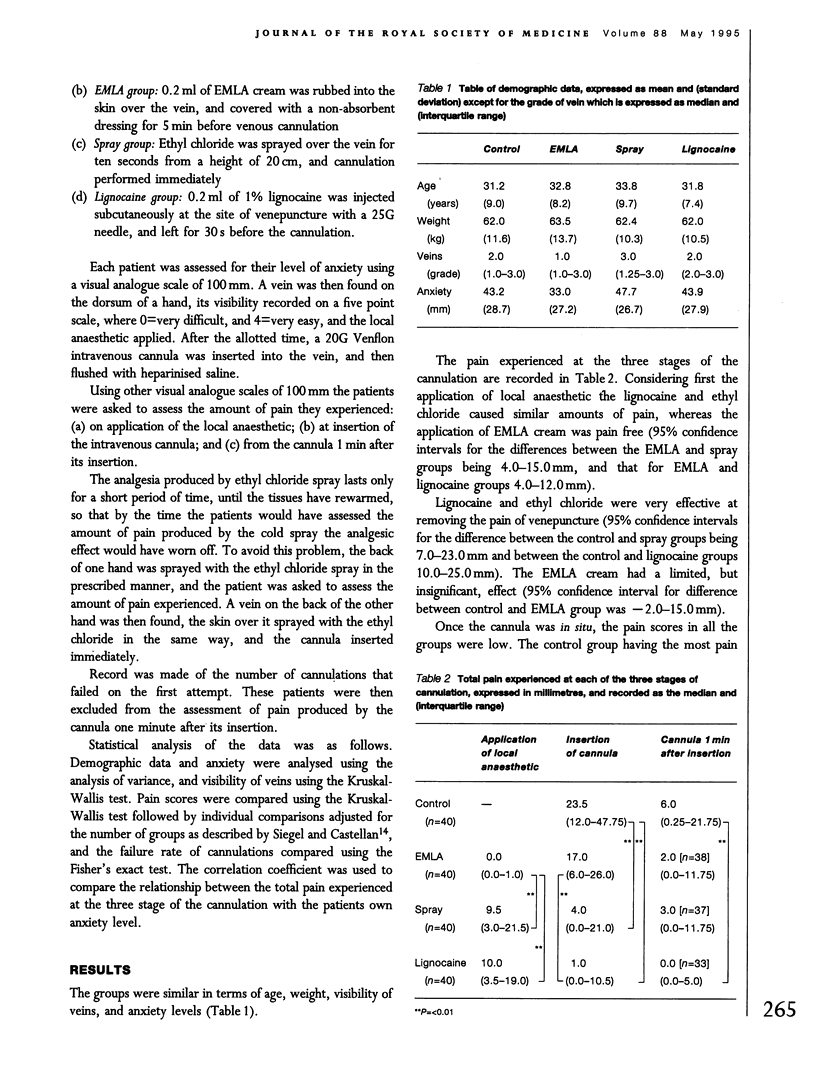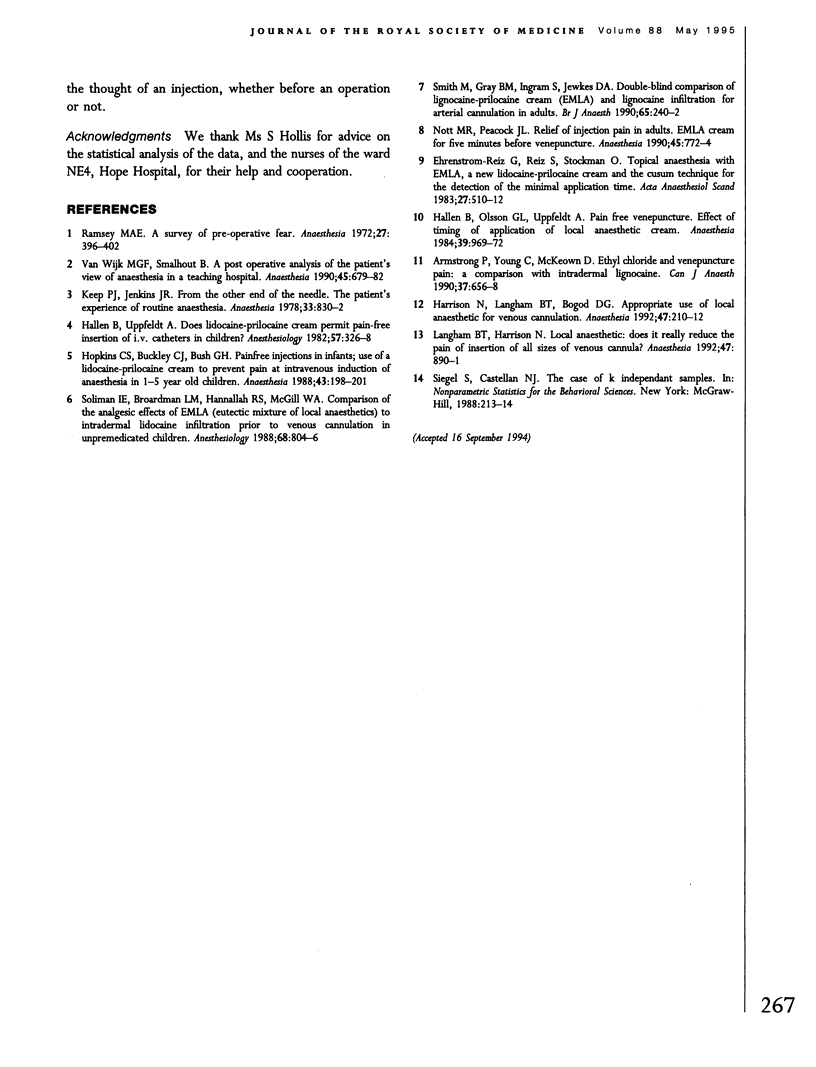Abstract
Three commonly available local anaesthetics were compared, in a controlled trial, for use before venous cannulation. The pain of application of the local anaesthetic, the pain of cannulation, and the rate of successful cannulations were compared. The value of EMLA cream applied for 5 min was questioned. Venous cannulation with a 20G venflon was found to be significantly more painful than the application of any of the local anaesthetics (P < 0.01). Lignocaine 1%, injected subcutaneously, and ethyl chloride spray significantly reduced the pain of venous cannulation (P < 0.01). The use of lignocaine did not result in significantly more failed cannulations than the control group. It was concluded that local anaesthesia should be used before venous cannulation, even for 20G cannulae.
Full text
PDF



Selected References
These references are in PubMed. This may not be the complete list of references from this article.
- Armstrong P., Young C., McKeown D. Ethyl chloride and venepuncture pain: a comparison with intradermal lidocaine. Can J Anaesth. 1990 Sep;37(6):656–658. doi: 10.1007/BF03006485. [DOI] [PubMed] [Google Scholar]
- Hallén B., Olsson G. L., Uppfeldt A. Pain-free venepuncture. Effect of timing of application of local anaesthetic cream. Anaesthesia. 1984 Oct;39(10):969–972. doi: 10.1111/j.1365-2044.1984.tb08884.x. [DOI] [PubMed] [Google Scholar]
- Harrison N., Langham B. T., Bogod D. G. Appropriate use of local anaesthetic for venous cannulation. Anaesthesia. 1992 Mar;47(3):210–212. doi: 10.1111/j.1365-2044.1992.tb02120.x. [DOI] [PubMed] [Google Scholar]
- Hopkins C. S., Buckley C. J., Bush G. H. Pain-free injection in infants. Use of a lignocaine-prilocaine cream to prevent pain at intravenous induction of general anaesthesia in 1-5-year-old children. Anaesthesia. 1988 Mar;43(3):198–201. [PubMed] [Google Scholar]
- Keep P. J., Jenkins J. R. From the other end of the needle. The patient's experience of routine anaesthesia. Anaesthesia. 1978 Oct;33(9):830–832. doi: 10.1111/j.1365-2044.1978.tb08502.x. [DOI] [PubMed] [Google Scholar]
- Langham B. T., Harrison D. A. Local anaesthetic: does it really reduce the pain of insertion of all sizes of venous cannula? Anaesthesia. 1992 Oct;47(10):890–891. doi: 10.1111/j.1365-2044.1992.tb03157.x. [DOI] [PubMed] [Google Scholar]
- Nott M. R., Peacock J. L. Relief of injection pain in adults. EMLA cream for 5 minutes before venepuncture. Anaesthesia. 1990 Sep;45(9):772–774. doi: 10.1111/j.1365-2044.1990.tb14453.x. [DOI] [PubMed] [Google Scholar]
- Ramsay M. A. A survey of pre-operative fear. Anaesthesia. 1972 Oct;27(4):396–402. doi: 10.1111/j.1365-2044.1972.tb08244.x. [DOI] [PubMed] [Google Scholar]
- Smith M., Gray B. M., Ingram S., Jewkes D. A. Double-blind comparison of topical lignocaine-prilocaine cream (EMLA) and lignocaine infiltration for arterial cannulation in adults. Br J Anaesth. 1990 Aug;65(2):240–242. doi: 10.1093/bja/65.2.240. [DOI] [PubMed] [Google Scholar]
- Soliman I. E., Broadman L. M., Hannallah R. S., McGill W. A. Comparison of the analgesic effects of EMLA (eutectic mixture of local anesthetics) to intradermal lidocaine infiltration prior to venous cannulation in unpremedicated children. Anesthesiology. 1988 May;68(5):804–806. doi: 10.1097/00000542-198805000-00025. [DOI] [PubMed] [Google Scholar]
- van Wijk M. G., Smalhout B. A postoperative analysis of the patient's view of anaesthesia in a Netherlands' teaching hospital. Anaesthesia. 1990 Aug;45(8):679–682. doi: 10.1111/j.1365-2044.1990.tb14399.x. [DOI] [PubMed] [Google Scholar]


